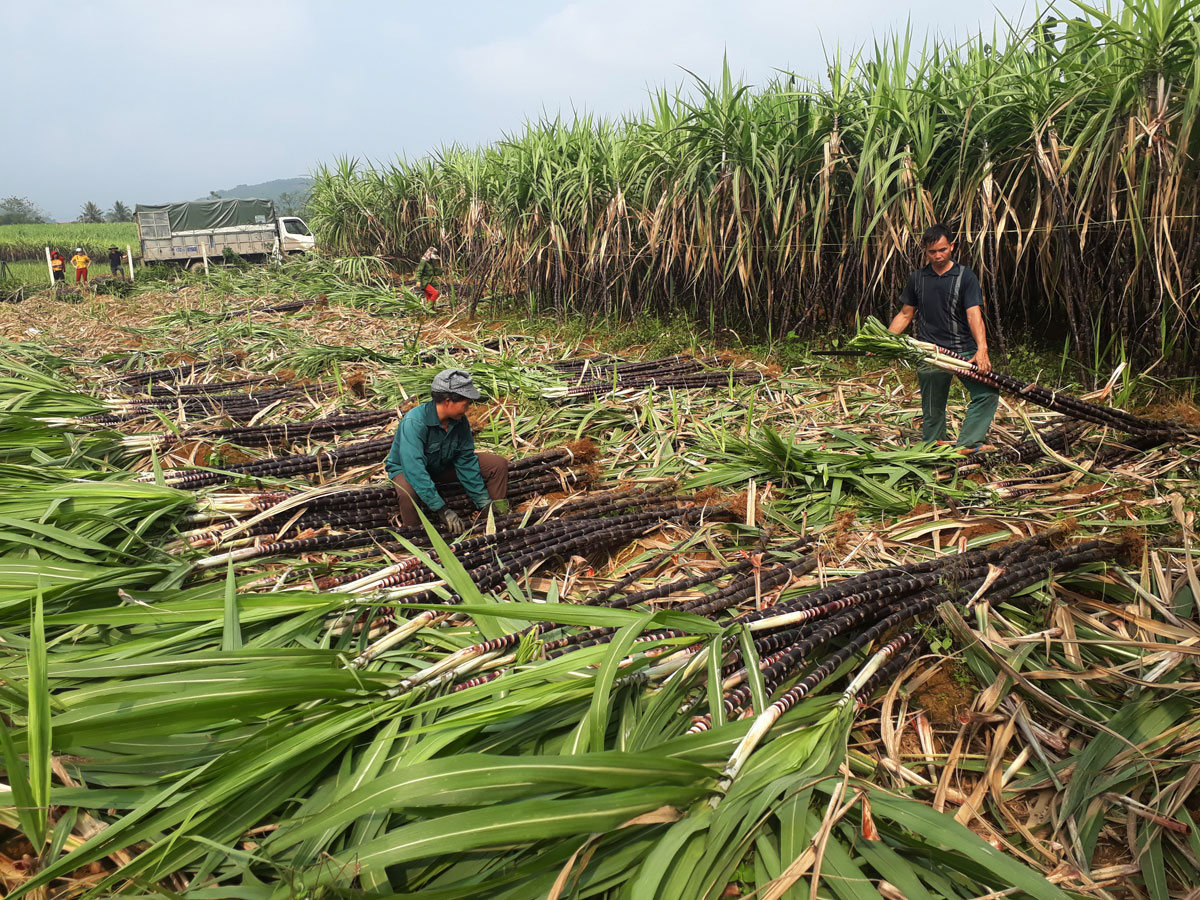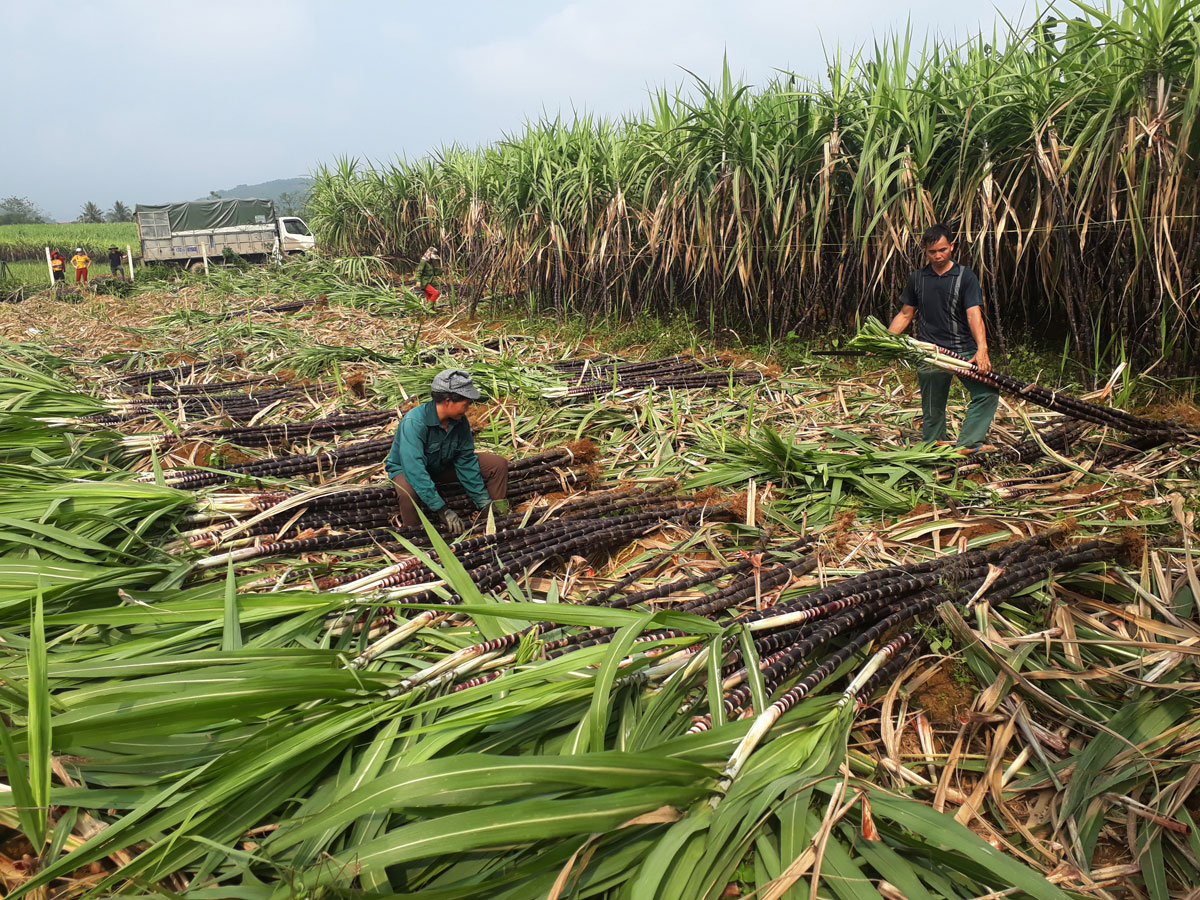
(HBO) – Purple sugarcane, attaching to the life of Muong ethnic minority since ancient time, is not only a crop of high economic value, but also an indispensable item in key events of the community, especially the Lunar New Year festival (Tet) and wedding ceremony.
When being children, we were often tasked with
going to the edge of the forest to cut fresh reeds to erect a neu pole and then
to fields to chop down a couple of sugarcane plants as decorations for Tet. We
kept fulfilling our tasks for the 27th day of the passing Lunar year’s last
month without ever wondering what is the meaning of the sugarcane. Years went
by; we grew up and learnt that the plants are also an integral part of any
wedding ceremonies in our community.
Once I posted a photo capturing a wedding
ceremony of a Muong couple. Under the post, a friend of mine from the
university raised a question that why the groom's family has to carry sugarcane
with them when going to the bride’s home.
The question prompted me to find an answer. I
asked many people from different ages; most of them told me it is the custom.
Feeling unsatisfied, I came to meet Bui Van Nhon, a manliving in Tan Lac
district’s Gia Mo commune who is dedicated to learning about the Muong ethnic
minority. Nhon shared my curiosity about the sugarcane and had spent time
collecting related materials and studying the custom. He said the plants’
presence on Tet or at wedding ceremonies is originated from a legend about the
Coi sisters.
Legend has it that once upon a time, there was a
giant mosquito in the land of Muong people, which annually fed on selected
locals. Then it was the Coi sisters’ turn to be the feed. The sisters loved
each other so much, and both were willing to give up their lives for the other
to survive. Unable to decide who would go, they went to the mosquito’s cave
together so that the mosquito could choose to eat the one it wanted. Waiting
for predator in front of its home during the freezing 12th month of the lunar
year, they cut wild sugarcane and collected bagasse from other victims to make
a fire for warmth. Unexpectedly, the smoke from their fire killed the monster.
Muong people appreciated what they did and the sugarcane has since become a
symbol of the sisters’ love and held a significant role in their life.
Of the same opinion is Bui Huy Vong, an artisan
of folk art. According to Vong, sugarcane is cultivated with its stalks, which
sprout when being placed on the ground. With such strong reproduction feature,
the plant becomes a symbol of fertility and growth, which match the expectation
of Muong people for a new year. Since ancient time, the community has brought
home a couple of sugarcanes on Tet. The selected ones, with their roots and
leaves left intact, must be long, strait, and beautifully coloured, and free
from pests and diseases.
Meanwhile, at a wedding ceremony, a carefully
selected couple of sugarcane must be carried by young male relatives of the
groom. The plants represent an aspiration for a sweet marriage life ahead,
while their carriers a hope for their first child to be a son.
In a word, all explanations show Muong people’s
yearning for warmth, sweetness, growth, and the elimination of evils and bad
things.
As the Year of the Buffalo approaches, we are
now living our childhood memories with the tasks of bringing sugarcane home and
watching for boiling pots of Banh Chung (square glutinous rice cake)./.
The People’s Committee of Lac Son district held a ceremony on April 28 to receive the provincial relic certificate for the ancient rock carving site at Suoi Co stream, located in My Thanh commune.
A special music show titled "The country is in the fullness of joy” has been held at Hoa Binh Square in Hoa Binh city in celebration of the 50th anniversary of the liberation of the South and national reunification (April 30, 1975–2025).
The People's Committee of Lo Son commune, Tan Lac district, has organised the local annual traditional stream fishing festival on April 19 - 20.
As a land deeply intertwined with human history and Vietnam’s millennia-long journey of nation-building and defence, Hoa Binh is often revered for its epic tales and legends.
Residents of Hoa Binh boast a rich cultural identity, reflected in their unique language, traditional attire, customs, and folk melodies – described as "sweet as honey, clear as a mountain stream.”
Lac Son district’s Vu ban town held the 2025 Truong Kha temple festival on April 12–13 (the 15th–16th days of the third lunar month). Since its revival in 2019, the festival has been organised every three years, preserving valuable intangible heritage while meeting the community’s cultural and spiritual needs.



